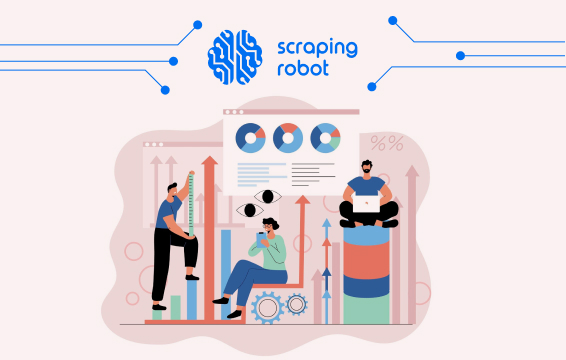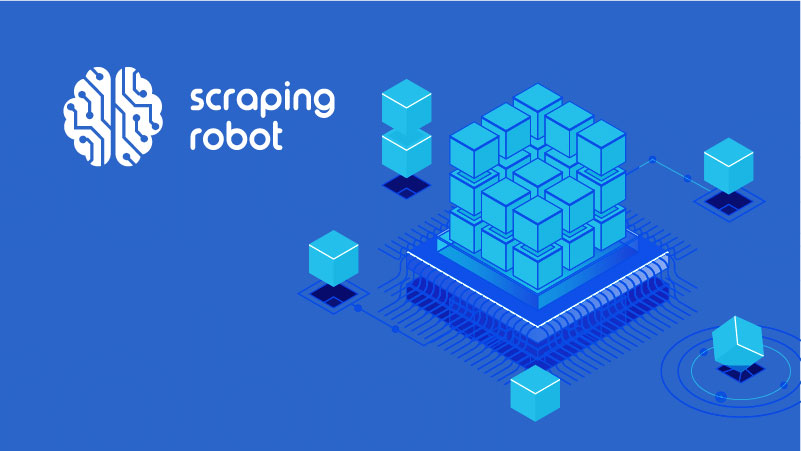How To Scrape Data From Web Pages For Sentiment Analysis

The slight inflection in someone’s voice. A poignant comment interpreted as sarcasm. Humor that comes across as anger. All three examples show the complexities of human emotions. Choose the wrong word when tackling a difficult topic and the true meaning behind your statement could be lost on your audience. Language is more than a means to communicate, it reveals our deepest fears and our sincerest natures. Language allows us to decipher feelings that are otherwise overwhelming. How fortunate we are as a species. The ability to define all that we are, in a few short statements. But what happens when emotions confront capitalism? How do marketing teams and PR firms make sense of an abundance of consumer feedback? Since the rise of the online store and the inception of social media, customers need only click a few buttons in order to make their thoughts known. Where does this leave companies?
Table of Contents
For many corporations, the answer lies in sentiment analysis. Whether a foreign concept or familiar, this particular type of analysis is an invaluable aspect of public opinion. In this blog, I’ll take you through the definition of sentiment analysis, how it works, and why, when paired with scraping tools, sentiment analysis can radically transform how businesses sell to clients.
What is Sentiment Analysis?

Sentiment analysis is the collection, categorization, and analysis of text using techniques such as natural language processing (NLP) and computation linguistics. This kind of analysis helps companies better understand how their consumers react to particular brands and products. Human expressions are classified as positive, negative, or neutral. In general, companies are attempting to gauge whether or not a customer’s response is positive or negative. For this reason, sentiment analysis is easier to understand if the vague or neutral language is funneled out of the research and the polarity between positive and negative language is emphasized. After all, it’s easier for a massive organization like Google to change marketing tactics if there’s a strong consensus about available services.
More specifically, when using sentiment analysis, market researchers can tell where there is room to grow within the company. For example, based on the data collected, a company might see that buyers respond well to their customer service but are unhappy with the quality of the product being sold. Thanks to modern technology, leaving a comment or review is a simple, quick action on the part of the consumer. One of the main reasons to use sentiment analysis is to automate the process of gathering all the available feedback. By automating the process, businesses can then weed out unhelpful text and get to the heart of what shoppers want.
How Does Sentiment Analysis Work?

There are several different ways to approach sentiment analysis. These approaches come from NLP, which I mentioned earlier in the blog. The three main types are statistical, knowledge-based, and a hybrid method. As we investigate further, you’ll see that each method has merit.
Statistical method
The definition is all in the name. This method of analysis uses statistical, or machine learning techniques, to interpret the text. This approach utilizes classifications, meaning the text is run through a feature extractor then transformed into feature vectors. An algorithm interprets the feature vectors and creates predictions: positive, negative, and neutral.
First, the text needs to be transformed. A popular way to transform the text is through “bag-of-words”. BoW incorporates two things: vocabulary and the presence of familiar words. Pertinent information consists of any of those known words occurring in the document. It’s thought that if documents have many similar words, then there is something to be gained from that information.
In addition to BoW, a feature extraction called “word vectors” offers a new way of finding like words and making sure those words have like representation. After the text is transformed, it’s then classified using a specific algorithm.
In short, the statistical method is an automatic way to find features within a text.
Knowledge-based
A knowledge-based method incorporates a human element. In this method, words are generally put into two different categories: positive and negative. After the lists are made, the particular words in the text that fit into one of these two categories are counted. The outcome is straightforward – if there are more positive words in a text, then that text is classified as positive. If there are more negative words, then the text is classified as negative.
This system is more elementary than the complex statistical method discussed above. But complexity doesn’t always translate to what’s best. Some companies might prefer to follow a simpler set of rules when translating already-complicated emotional responses.
Hybrid method
As you might have guessed, the hybrid method is a combination of the two methods discussed above. Because this method incorporates the best of what statistical and knowledge-based have to offer, it often produces the most accurate results.
What Are Sentiment Analysis Models?

While the list of potential analysis models extends into the granular, for our purposes I want us to take a look into two main models: coarse-grained sentiment analysis and fine-grained sentiment analysis.
Coarse-grained
Throw out the notion of coarse being a rough, bristly object. In this case, coarse analysis searches entire documents, comments, or sentences. This kind of analysis uses a wide lens. Coarse-grained analysis can be performed using subjectivity classification and sentiment detection.
Subjectivity classification determines whether a sentence or document is subjective or objective. To be subjective is to display an opinion or feeling about a topic. For example, if I were to say, “golden retrievers are my favorite dogs. I love them more than any other breed,” that’s subjective. On the flip side, if I took an objective approach, I’d say something along the lines of, “golden retrievers are a popular kind of dog breed.” The second sentence is less emotional, more fact-based. Personally, I would never dare be objective about dogs, but no coarse-grained model would have to be performed to deduce that.
Sentiment detection allows us to then recognize whether a sentence is emotional and if that emotion is positive, negative, or neutral. We’re old pros at this aspect of the analysis.
Fine-grained
Now we come to the finer things in life. A fine-grained model breaks down sentences into different parts of speech and, within those phrases, digs into the exact meaning of the emotion. Fine-grained analysis allows you to see just who is saying what about which item. Different features of products are more identifiable, therefore able to be corrected or emulated. Say you leave a review about an Apple product on Apple’s website. Fine-grained analysis can pinpoint which product you’re talking about and the part of the product you like or take issue with. You can see how useful this model is for employees hoping to make immediate fixes to products.
Top Reasons for Online Sentiment Analysis
After that high-level overview of sentiment analysis, we’re ready to move on to the application phase. We’ve touched upon a few reasons why companies might worship at the feet of sentiment analysis, but let’s get into the nitty-gritty.
For consumer response
Gaining insight into how customer’s feel about your services, a particular product, or your company in general, is invaluable to the success of your business. Sentiment analysis interprets a shopper’s feelings in an accurate way, which makes marketing, PR, and actual product creation a smoother process.
For website monitoring
Online sentiment analysis is a means to monitor what’s being said on your site and sites where your products are sold. By staying vigilant of online activity, your company is better equipped for accurate market research and less likely to be blindsided by negative reviews on products. Plus, a large amount of sentiment analysis data can be found on social media. Monitoring hits, likes, and comments can keep you wise to the latest responses regarding your company.
A way to stay competitive
We live in a hyper-competitive world. By employing a successful analysis of online data, your company will never be left behind. Checking to see how your product reviews measure up to your competitors is just one way to stay afloat amidst growing corporations.
I do want to mention that sentiment analysis, which incredibly useful, is not an exact science. Human emotions can be a tricky thing to grasp, whether it’s a person making an attempt to understand or a computer. In fact, a computer often has a hard time comprehending subtleties of humor, like when a person means to be sarcastic. For this reason, ease into sentiment analysis and take the results with a grain of salt. The results give a better understanding of what customers want not a black and white reading of the exact feeling a person had when writing a comment or criticism.
How To Scrape Data for Sentiment Analysis

Wading through reviews, comments, and feedback is a lofty task. But what if there were an even easier way to utilize sentiment analysis? That’s where data scraping comes into play. Data scraping is the automated process of gathering large amounts of information about a particular subject. In order to scrape data for sentiment analysis, one would simply need to instruct the scraper to search for the data they need. So, if you want all the feedback provided on every version of the same blender, a scraper can do a sweep of all this feedback, grab it, and arrange it into a neat file. The benefit of scraper data on the front end of sentiment analysis is the massive time saved on the part of a researcher. A scraper doesn’t recognize emotions in data, simply collects the data itself, so when you think about it, scraping is a natural first step in the analysis process.
The Best Scraping Tools for Sentiment Analysis

Now that we know to perform sentiment analysis with the use of a data scraper, you might be asking yourself, “where can I find the best scraper on the market?” Scraping Robot is here to provide you with the highest-quality scrapers available. Not only do we have scrapers made specifically for social media and HTML, but we also offer custom scraping jobs. You need only reach out to us and we’ll work with you to find a practical solution to your request. At just $0.0018 per scrape, our prices can’t be beaten. Sign up today and get 5000 scrapes free. That’s 5000 scrapes closer to conquering the finest sentiment analysis ever performed. In addition to our frequent improvements, we provide 7-day data storage for your convenience. Best of all, our customer service team is available 24/7 should you have any pressing questions. Thanks to Scraping Robot, the marriage between sentiment analysis and data scraping is a match made in heaven.”
Wrapping Up
Our emotions are our mightiest resource of power. They can control you or you can capture them, bend them into being productive. To some, corporations and big businesses are the farthest things from an overflowing well of empathy. However, those same companies crave feedback, want to hear all your thoughts, good, bad, and in between. The present is no time to shy away from sentiment. Sentiment analysis helps companies, yes, but it also encourages the consumer to keep providing feedback. Because guess what? The marketing specialist working for your favorite online retailer hears you. Take all the fast actions of a data scraper and the positive outcomes of sentiment analysis, and you have a winner. But don’t just take my word for it, scrape, analyze, and see.
The information contained within this article, including information posted by official staff, guest-submitted material, message board postings, or other third-party material is presented solely for the purposes of education and furtherance of the knowledge of the reader. All trademarks used in this publication are hereby acknowledged as the property of their respective owners.
